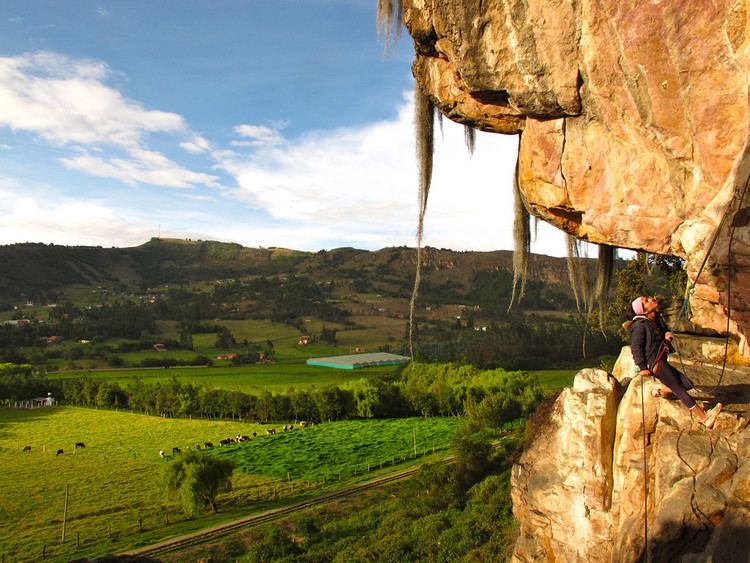Founded 14 March 1537 Elevation 2,584 m Population 17,318 (2015) | Website Official website Area 177 km² Local time Thursday 11:57 AM | |
 | ||
Weather 17°C, Wind E at 13 km/h, 69% Humidity Founder | ||
Viajes colombia 10 monolitos laguna y escalada en suesca cundinamarca
Suesca is a town and municipality in the Almeidas Province, part of the department of Cundinamarca, Colombia. It is located on the Altiplano Cundiboyacense at 59 kilometres (37 mi) north from the capital Bogotá. Suesca forms the northern edge of the Bogotá savanna and is a scenic countryside town which is well known because its landscape attracts devotees of rock climbing, trekking, and rafting. It is surrounded by dairy farms and flower plantations. The municipality borders Cucunubá and Lenguazaque in the north, Sesquilé in the south, Chocontá in the east and Nemocón and Gachancipá in the west.
Contents
- Viajes colombia 10 monolitos laguna y escalada en suesca cundinamarca
- Map of Suesca Cundinamarca Colombia
- Rock climbing suesca colombia
- Etymology
- History
- Tourism
- References
Map of Suesca, Cundinamarca, Colombia
Rock climbing suesca colombia
Etymology
The name Suesca is derived from the Chibcha word Suejica, Sueica or Suesuca, which means "Rock of the birds" or "Tail of the macaw".
History
Suesca was inhabited early in the history of inhabitation of the Altiplano and the rock shelters formed the site for semi-nomadic hunter-gatherers of the Herrera and preceramic periods.
Before the Spanish conquest, Suesca was part of the Muisca Confederation. The cacique of Guatavita ruled over Suesca, the village close to the sacred Lake Guatavita and containing Lake Suesca where rituals were held. Suesca formed an important centre on the trade road to Boyacá, ruled by the zaque of Hunza. The merchants took carbon and salt on their way to the north. Every four days a market was held in Suesca. Suesca was also an important settlement for the pottery made by the Muisca.
When conquistador Gonzalo Jiménez de Quesada arrived in Suesca in March 1537 he founded the modern town. In Suesca he sentenced a soldier of his army to death, for stealing mantles from the Muisca. After submitting the zaque of Hunza, Quemuenchatocha, the Muisca ruler was taken prisoner to Suesca in an attempt to let him reveal the location of his treasures. When the zipa of Bacatá, Tisquesusa, heard about the Spanish presence in Suesca, he sent a spy to the town to gain information about their strength. The Muisca, unfamiliar with horses and horseback riders, thought that the horse and the rider were one. When a horse died in Suesca, they found out this was not the case. Suesca is also the place where De Quesada died in 1579, after writing the now lost work Ratos de Suesca.
In 1602 in a cave in Suesca 150 Muisca mummies were discovered. The mummies were organised in a circle around the mummie of the cacique of the town. Also rock art has been found in Suesca. The pictographs of Suesca are among the most extensive of Cundinamarca, but at the same time the most vandalised.
Tourism
From downtown Bogotá by public transportation one should budget about 2 hours to get to Suesca, or one hour from the Portal del Norte terminal.
